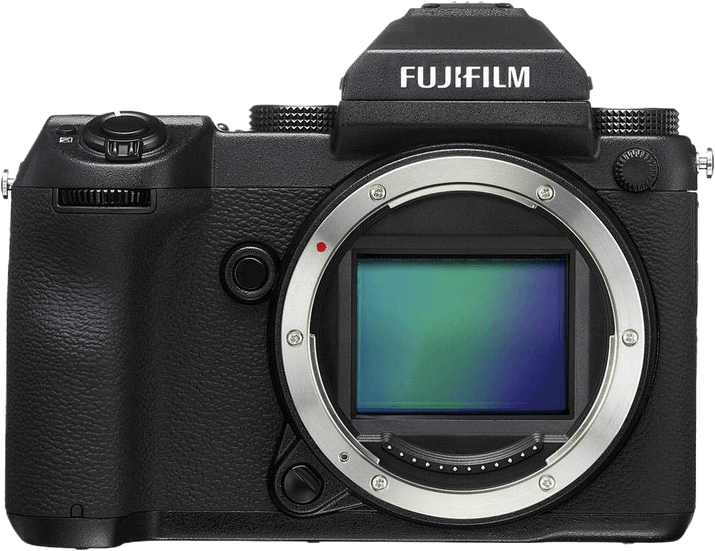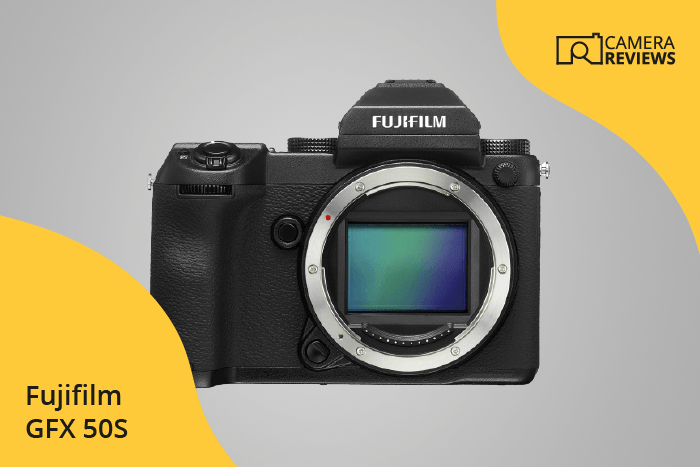Fujifilm GFX 50S Specs and Scores

The Fujifilm GFX 50S receives a score of 78/100 for its general specifications. Announced on September 19, 2016, this mirrorless camera was released at a launch price of $6,499. The GFX 50S measures 148 x 94 x 91mm and weighs 920g or 2.03lbs.
Considering its release in 2016, the Fujifilm GFX 50S still competes well in today’s market. Its size and weight make it a portable option for photographers. Although newer models have emerged, the GFX 50S remains a reliable choice for quality photography.
Fujifilm GFX 50S Overview and Optics
The Fujifilm GFX 50S receives a score of 77/100 for its optics. This camera boasts 51 megapixels, a shooting speed of 3 frames per second, and a CMOS sensor. The X-Processor Pro further enhances its performance. Although DXOMARK does not score Fujifilm cameras, the GFX 50S stands strong with its medium format sensor size.
The Fujifilm G lens mount allows for a wide range of compatible lenses. Additionally, the camera has an image stabilization feature, ensuring sharp and steady images. The 3:2 aspect ratio provides a versatile shooting experience.
The GFX 50S holds its place in the market with its impressive specifications. It offers high-quality images and flexibility, making it a strong contender among other cameras in its class.
Fujifilm GFX 50S Video Performance
The Fujifilm GFX 50S lacks video capabilities, a feature present in most cameras. However, it compensates with built-in time-lapse functionality, allowing users to capture stunning sequences of images over time.
Fujifilm GFX 50S Features and Benefits
The Fujifilm GFX 50S receives an impressive feature score of 87/100. It boasts a 3.2-inch touchscreen with a screen resolution of 2,360,000 dots, providing sharp and clear image previews. However, it lacks a flip screen which could limit its usability in certain shooting situations. The camera does not have GPS but compensates with integrated WIFI and Bluetooth capabilities, allowing for seamless connectivity and sharing of images.
Comparing the GFX 50S to other cameras in today’s market, it holds a strong position with its high-resolution touchscreen and connectivity features. Despite the absence of a flip screen and GPS, the camera’s overall performance and feature set make it a worthy contender for photographers seeking quality and reliability. The Fujifilm GFX 50S proves to be a dependable choice in the world of digital cameras.
Fujifilm GFX 50S Storage and Battery
The Fujifilm GFX 50S receives a storage and battery score of 57/100. It has two memory card slots that accept SD, SDHC, and SDXC cards, with compatibility for UHS-II. In today’s market, this offers versatility and convenience for photographers.
The camera’s battery life allows for 400 shots, using the NP-T125 battery type. However, it lacks USB charging functionality. Compared to other cameras in its class, the battery life is average, but the absence of USB charging may be a drawback for some users.
The GFX 50S provides sufficient storage and battery performance for most photographers, but improvements could be made, particularly in the charging options.
Fujifilm GFX 50S Alternatives
Do you want to know how the Fujifilm GFX 50S compares to its competitors? Have a look at the most popular comparisons for this camera below:
- Canon EOS R5 vs Fujifilm GFX 50S
- Canon EOS Rebel T7i / 800D vs Fujifilm GFX 50S
- Fujifilm GFX 50S vs Nikon Z7 II
- Fujifilm GFX 50S vs Olympus PEN E-PL7
- Fujifilm GFX 50S vs Sony a7 IV
Fujifilm GFX 50S FAQ
Does the Fujifilm GFX 50S Have Built-in Image Stabilization?
The Fujifilm GFX 50S does not have built-in image stabilization. However, some compatible lenses offer optical image stabilization to compensate for camera shake.
Does the Fujifilm GFX 50S Support 4K Video Recording?
The Fujifilm GFX 50S does not support 4K video recording. It has limited video functionality with a maximum resolution of 1080p at 30fps.
What Size Sensor Does The Fujifilm GFX 50S Have?
The Fujifilm GFX 50S is equipped with a medium format sensor, specifically a 51.4-megapixel 43.8 x 32.9mm CMOS sensor, which provides exceptional image quality.
Does the Fujifilm GFX 50S Have a Dual Memory Card Slot?
Yes, the Fujifilm GFX 50S features a dual memory card slot, supporting two SD/SDHC/SDXC cards for flexible storage options and backup.
Does the Fujifilm GFX 50S Have a Touch Screen?
Yes, the Fujifilm GFX 50S has a 3.2-inch tilting touch screen display, which allows for easy navigation and control of the camera’s settings.
Does the Fujifilm GFX 50S Have Wi-Fi and Bluetooth?
The Fujifilm GFX 50S is equipped with both Wi-Fi and Bluetooth connectivity, allowing for remote control, image transfer, and easy pairing with compatible devices.
Does the Fujifilm GFX 50S Have GPS?
No, the Fujifilm GFX 50S does not have built-in GPS. However, location data can be added to images using a compatible smartphone and the Fujifilm Camera Remote app.
Is the Fujifilm GFX 50S Weather Sealed?
Yes, the Fujifilm GFX 50S is weather-sealed, featuring dust and weather resistance for reliable performance in various shooting conditions.
Does the Fujifilm GFX 50S Have a Built-in Flash?
No, the Fujifilm GFX 50S does not have a built-in flash. However, it has a hot shoe for attaching external flash units and supports TTL flash control.

